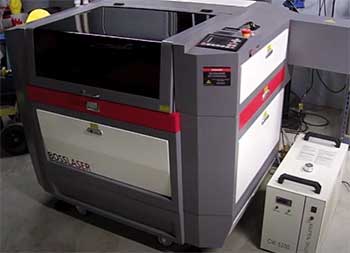Ever wondered what happens to your old tires once they’ve worn out? If you think they’re just tossed aside, think again! Today, we’re going to look into the fascinating world of tire retreading. Not only is this process a brilliant way to give tires a new lease on life, but it’s also an eco-friendly option that can save you some serious cash.
Let’s get real – tires are expensive, and constantly buying new ones can be a major hit to your wallet. But what if I told you there’s a way to extend the life of your tires without compromising safety or performance? That’s where retreading comes in. Tire retreading is the process of renewing old, worn-out tires by replacing their tread, allowing them to be reused safely. This process is not only cost-effective but also environmentally friendly, reducing waste and conserving resources.
Our journey through the world of tire retreading will explore each step of the process, explain why it’s beneficial, and show you why retreading might just be the best option for your next set of tires.
The Basics: What Is Tire Retreading?
Before we get into the nitty-gritty, let’s start with the basics. Tire retreading, also known as recapping or remolding, involves applying a new tread to a used tire casing. The casing is the structural part of the tire, while the tread is the part that makes contact with the road. By replacing only the worn-out tread, the tire’s life can be extended without needing a completely new tire.

Why Retread?
There are several reasons why retreading is a fantastic option:
- Cost Savings
Retreaded tires are significantly cheaper than brand-new tires.
- Environmental Impact
Retreading reduces the number of tires that end up in landfills and lowers the demand for raw materials.
- Performance
Modern retreading techniques ensure that retreaded tires perform almost as well as new ones.
Now, let’s get down to the steps involved in retreading a tire.
Step 1: Initial Inspection
The first step in the tire retreading process is a thorough inspection of the used tire, known as the casing. This inspection is crucial because the casing must be in good condition to ensure the safety and durability of the retreaded tire.
- Visual and Non-Destructive Testing
During the inspection, the tire is checked for any visible damage such as cuts, punctures, or exposed cords. But it doesn’t stop there – non-destructive testing methods like X-ray or shearography are often used to detect internal damages that aren’t visible to the naked eye.
- Criteria for Acceptance
Not all tires are suitable for retreading. The casing must meet specific criteria, including:
– Adequate tread depth remaining.
– No structural damage.
– Even wear patterns.
If the tire passes these rigorous checks, it’s off to the next step.
Step 2: Buffing
Once a tire passes the initial inspection, it moves on to the buffing stage. Buffing is essentially the process of removing the old tread from the casing to prepare it for the new tread.
- How Buffing Works
In the buffing process, the tire is placed on a machine that grinds away the worn tread. The goal is to create a smooth, even surface, which is essential for the new tread to adhere properly. This process also involves contouring the tire to ensure it meets specific dimensions and profiles.
- Importance of Precision
Precision is key in this step. An uneven or improperly buffed tire can lead to poor adhesion of the new tread, which can compromise the tire’s performance and safety.
[su_note]Also Read: What defines a good tire?[/su_note]

Step 3: Repairing the Casing
After buffing, any minor damages or imperfections in the casing are repaired. This step is crucial to ensure the longevity and reliability of the retreaded tire.
- Identifying and Fixing Issues
Small punctures or cuts are filled with specialized rubber compounds. Larger damages might involve more extensive repairs, like patching from the inside. The goal is to restore the casing to its best possible condition before applying the new tread.
- Quality Control
Each repair is carefully inspected to ensure it meets quality standards. This step helps prevent any potential issues that could arise from weak spots in the tire.
Step 4: Applying the New Tread
Now comes the exciting part – applying the new tread to the prepared casing. There are two main methods for this: precure and mold cure.
- Precure Process
In the precure process, the new tread rubber is pre-vulcanized and comes in strips. These strips are wrapped around the tire casing and then bonded using a special cement. The tire is then placed in a curing chamber where heat and pressure are applied to ensure the tread adheres firmly to the casing.
- Mold Cure Process
In the mold cure process, raw rubber is applied directly to the tire casing. The tire is then placed in a mold that contains the tread pattern. Under heat and pressure, the rubber vulcanizes and takes on the tread pattern from the mold. This method allows for more customization in tread patterns.
- Ensuring Strong Adhesion
Regardless of the method used, the key is ensuring a strong bond between the new tread and the casing. This is achieved through a combination of high-quality materials, precise application techniques, and controlled curing environments.

Step 5: Final Inspection and Quality Control
Once the new tread is applied, the tire undergoes a final inspection to ensure it meets all safety and performance standards.
[su_note]Also Read: Which tire should you pick?[/su_note]
- Visual and Mechanical Checks
This inspection includes a visual check for any visible defects and mechanical tests to ensure the tread is properly adhered. Tires might also be subjected to pressure tests to simulate real-world driving conditions.
- Balancing
The tire is also balanced to ensure it rolls smoothly. This step helps prevent vibrations and uneven wear when the tire is in use.
- Certification and Standards
Many countries have specific standards and certifications for retreaded tires. The final inspection ensures that the tire complies with these regulations, providing peace of mind to consumers.
Benefits of Retreading
By now, you should have a good understanding of how tires are retreaded. But you might be wondering, why go through all this trouble? Let’s break down the benefits.
- Cost-Effectiveness
Retreaded tires can cost up to 50% less than new tires, offering significant savings, especially for fleet operators who go through tires quickly.
- Environmental Impact
Retreading tires reduces waste and conserves natural resources. Every retreaded tire means one less tire in a landfill and less rubber and petroleum used in manufacturing new tires.
- Performance and Safety
Modern retreading techniques ensure that retreaded tires perform just as well as new ones. They undergo rigorous testing and meet strict safety standards, providing reliable performance on the road.
Common Misconceptions About Retreaded Tires
Despite the benefits, there are some common misconceptions about retreaded tires. Let’s clear those up.
Myth: Retreaded Tires Are Unsafe
Many people believe that retreaded tires are less safe than new tires. However, when properly retreaded, these tires meet all safety standards and can perform just as well as new tires.
- Myth: Retreaded Tires Don’t Last Long
Another misconception is that retreaded tires wear out quickly. In reality, a well-retreaded tire can have a lifespan comparable to a new tire, especially when maintained properly.
- Myth: Retreaded Tires Are Only for Commercial Vehicles
While it’s true that retreading is popular in the commercial sector, passenger vehicle tires can also be retreaded. This option is growing in popularity as more consumers become aware of the benefits.
How to Maintain Your Retreaded Tires
To get the most out of your retreaded tires, proper maintenance is key. Here are some tips:
- Regular Inspections
Just like with new tires, regularly inspect your retreaded tires for any signs of damage or uneven wear. Catching issues early can prevent bigger problems down the road.
- Proper Inflation
Keeping your tires properly inflated is crucial for safety and longevity. Under-inflated tires can cause increased wear and reduce fuel efficiency.
- Rotating Tires
Regularly rotating your tires helps ensure even wear, extending the life of your retreaded tires. Follow the rotation pattern recommended by your vehicle’s manufacturer.
- Balanced and Aligned
Make sure your tires are properly balanced and your wheels are aligned. This can prevent uneven wear and improve the overall performance of your vehicle.
Closure: Embrace the Benefits of Tire Retreading
And there you have it – a comprehensive look at how tires are retreaded. We’ve journeyed through the entire process, from the initial inspection to the final quality checks. By now, you should see that tire retreading is a smart, eco-friendly, and cost-effective solution that doesn’t compromise on safety or performance.
Next time you need new tires, consider going the retread route. Not only will you be saving money, but you’ll also be making a positive impact on the environment. Plus, with all the advancements in retreading technology, you can hit the road with confidence knowing your tires are up to the task.
Thanks for sticking with me through this deep dive into tire retreading. Whether you’re a driver looking to save some cash or someone passionate about sustainability, retreaded tires are definitely worth considering. Safe travels!

